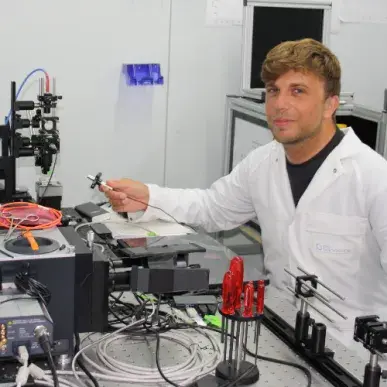PhD Thesis: Self-assembly and optical properties of gold nanoparticle superlattices for surface-enhanced Raman spectroscopy
Mathias Charconnet, early stage researcher of the Nanoengineering Group at nanoGUNE, has defended his PhD thesis Today at the University of the Basque Country.

The thesis, entitled Self-assembly and optical properties of gold nanoparticle superlattices for surface-enhanced Raman spectroscopy, has been supervised by Dr. Andreas Seifert (CIC nanoGUNE) and Dr. Luis M. Liz-Marzán (CIC biomaGUNE).
About the thesis
Due to their remarkable ability to confine light to the nanoscale, plasmonic nanostructures are ideal platforms for ultrasensitive spectroscopy techniques, such as surface-enhanced Raman scattering (SERS) spectroscopy. SERS has emerged as a technique of choice for the monitoring of low concentrations of chemicals and biological markers. Therefore, the fabrication of new optimized plasmonic substrates for SERS is essential for the detection of even lower concentrations of molecules. High and efficient SERS signals typically demands a match between the plasmon resonance wavelength and the Raman laser excitation wavelength. Plasmon resonances can be tailored through the nanostructure's shape or material. Particularly, in periodically arranged nanoparticles, i.e. plasmonic superlattices, the plasmon resonance can be tuned through changes in the lattice period. In this context, the overall goal of this thesis is to fabricate and study the plasmonic properties of highly regular gold nanoparticle superlattices made through self-assembly, with the aim of optimizing their SERS performance.
